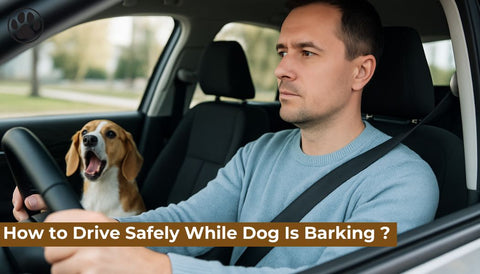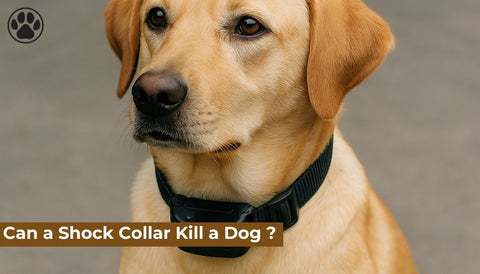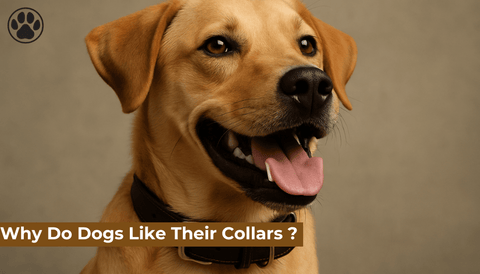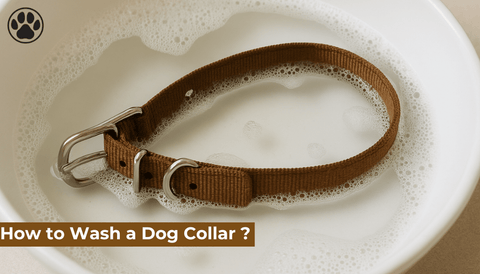
Why Do Dogs Like Their Collars ?
of reading - words
If you are a dog owner, you’ve probably noticed that your furry companion seems attached to their collar. In many cases, dogs will happily wear one, and some even get excited when they see it. But why exactly do dogs feel this way? The answer involves a mix of habit, comfort, and positive associations. Understanding why dogs like their collars can help you choose the right one and ensure your pet’s overall well-being.
The Role of Collars in a Dog’s Life
A dog collar is not just an accessory; it’s an essential part of a dog’s daily routine. Collars serve multiple purposes: they hold identification tags, support leashes for walks, and even provide comfort through familiarity. For dogs, a collar often becomes a symbol of safety, belonging, and activity.
Familiarity and Routine
Dogs are creatures of habit. When a collar becomes part of their everyday life, it quickly turns into something familiar. This sense of routine reassures dogs, making them more comfortable wearing one. Over time, many dogs begin to associate their collar with activities they enjoy, such as walks or playtime.
Just like a favorite blanket provides comfort to humans, a dog collar can provide a sense of consistency and stability to your pet.
Positive Associations with Collars
One of the main reasons dogs like their collars is because of the positive associations they develop. When you put on your dog’s collar before a walk, a car ride, or a play session, your pet starts linking the collar to enjoyable experiences.
For many dogs, seeing the collar come out of the drawer triggers excitement because it signals something fun is about to happen. This positive reinforcement makes wearing the collar a pleasant experience rather than a chore.
Collars as a Sense of Identity
Collars carry identification tags, which help dogs feel connected to their owners. While dogs may not understand names or phone numbers, they do recognize the jingling tags and the attention they receive when wearing them. A dog collar can become a part of their identity, making them feel secure and cared for.
Comfort and Fit
Dogs that like their collars usually have owners who choose the right size and material. A comfortable collar that fits properly doesn’t cause irritation or restrict movement. Materials such as padded nylon, leather, or breathable fabrics make wearing a collar a seamless part of the day.
On the other hand, if a collar is too tight, too loose, or made from rough materials, a dog may dislike it. Comfort is key when it comes to why dogs accept and even enjoy their collars.
Training Benefits of Collars
Collars also play a big role in training. For puppies, wearing a collar is often the first step in leash training and obedience. Over time, dogs learn that a collar is part of exploring the outside world safely. Because training sessions often involve treats and praise, dogs learn to associate their collars with rewards and attention.
This link between collars and training is another reason why many dogs happily wear theirs.
Safety and Security
For both dogs and their owners, collars provide a sense of security. A dog wearing a collar with ID tags is more likely to be returned home if lost. Dogs may not fully understand this, but they do feel the reassurance and consistency of wearing their collar daily.
Some dogs even appear uneasy when their collar is removed, almost as if something is missing. This reaction highlights how the collar contributes to their sense of normalcy.
Choosing the Right Collar for Your Dog
If you want your dog to truly enjoy their collar, choosing the right one is essential. Here are some tips:
-
Size: Ensure it’s snug but not too tight. You should be able to fit two fingers between the collar and your dog’s neck.
-
Material: Opt for soft, durable materials like padded nylon or leather.
-
Purpose: Everyday collars differ from training collars or harnesses. Choose one based on your dog’s activities.
-
Style: Some dogs may prefer lightweight collars, while others do well with sturdier designs.
You can browse a variety of high-quality options in our Dog Collar Collection.
Do All Dogs Like Collars?
Not all dogs immediately like wearing collars. Some puppies resist at first, and rescued dogs may be uncomfortable due to past experiences. With patience, positive reinforcement, and the right fit, most dogs can learn to accept and enjoy their collars.
It’s important to introduce collars gradually. Allow your dog to sniff and explore the collar before putting it on, and reward them with treats and praise once it’s in place. Over time, they will associate the collar with comfort and positivity.
The Difference Between Collars and Harnesses
While collars are popular, some owners prefer harnesses, especially for dogs that pull during walks. Harnesses distribute pressure across the chest instead of the neck, reducing strain. Still, most dogs wear collars daily because they are lightweight, practical, and ideal for holding identification tags.
For many dogs, the collar remains a constant accessory, while the harness is reserved for outdoor adventures.
When to Replace a Dog Collar
Just like any other accessory, dog collars wear out over time. Fraying, broken buckles, or stretched-out material are signs it’s time to replace the collar. A worn-out collar may cause discomfort, and your dog may start resisting it. Regularly check the condition of your dog’s collar to ensure it remains safe and comfortable.
If you’re considering an upgrade, check out our Dog Collar Collection for durable, stylish, and comfortable options.
Conclusion
So, why do dogs like their collars? The answer lies in routine, comfort, identity, and positive associations. A collar often becomes more than an accessory—it’s a symbol of security, fun, and connection with their owners. By choosing the right size, material, and style, you can ensure that your dog not only tolerates their collar but truly enjoys wearing it.
Collars play a vital role in safety and training, making them one of the most important items for any pet owner. With the right care and attention, your dog’s collar can be a source of comfort and joy every day.
FAQ
Q: Why does my dog get excited when I grab their collar?
A: Your dog likely associates the collar with fun activities such as walks, playtime, or going outside.
Q: Can dogs sleep with their collars on?
A: Yes, but it’s often recommended to remove the collar at night for comfort and to prevent matting in long-haired breeds.
Q: What if my dog hates wearing a collar?
A: Introduce it gradually, using treats and praise. Make sure the collar is the correct size and material.
Q: Are harnesses better than collars?
A: Harnesses are great for reducing neck strain during walks, but collars are still essential for holding ID tags and daily wear.
Q: How often should I replace my dog’s collar?
A: Replace it when it shows signs of wear such as fraying, loose stitching, or broken buckles.




